Adhesive Transfer Tape: Diving Deep into the Bond in 6 Parts
2023/07/07
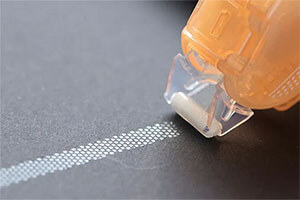
Adhesive transfer tape, often utilized across diverse sectors for bonding functions, is a distinct adhesive product. This tape is unique as it features an adhesive layer adhered to a liner or backing material, facilitating easy use. Unlike conventional tapes, it doesn’t have a carrier film but solely consists of the adhesive and the liner.
Adhesive Transfer Tape: An In-depth Analysis of Its Composition and Function
Adhesive transfer tape, a specialized adhesive product widely employed in various industries, stands out due to its unique composition and functionality. It primarily consists of two crucial components: the adhesive layer and the release liner.

The primary bonding element, can be synthesized from a multitude of materials such as acrylics, silicones, and rubbers. These materials contribute distinctive performance attributes to the adhesive. Acrylic adhesives, for instance, typically offer excellent environmental resistance and longevity, whereas silicone-based adhesives excel in high-temperature resistance. Rubber-based adhesives, on the other hand, are well-known for their high initial bond strength. Hence, the choice of adhesive material is often driven by the specific application requirements regarding resistance to heat, chemicals, flexibility, and bonding strength.
Typically constructed from materials like paper or plastic, plays an equally important role. Its function is to protect the adhesive layer during storage and transportation, and to provide ease of handling during application. The liner is designed to peel off smoothly, allowing the adhesive to be applied cleanly and accurately, and minimizing waste. The selection of liner material can influence the ease of removal and overall user experience, and it may be chosen based on the intended application and user environment.
How Adhesive Transfer Tape is Manufactured
The manufacturing process for adhesive transfer tape involves several key steps, which I will outline below:
Step 1. Adhesive formulation:
The first step is to create the adhesive mixture. This is typically made from a base material such as acrylic, silicone, or rubber, which is then mixed with various additives to create the desired properties. These might include heat resistance, chemical resistance, flexibility, and bonding strength.
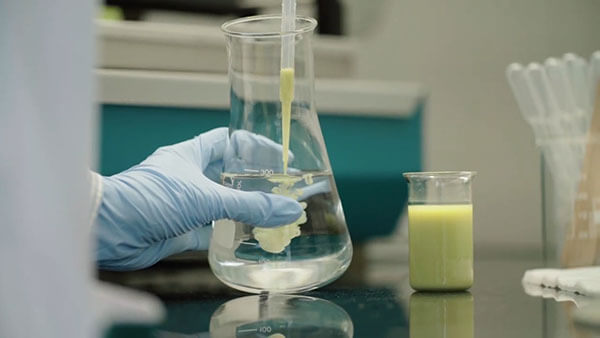
Step 2. Adhesive coating:
Once the adhesive mixture is ready, it is applied to a release liner, a material that is designed to easily separate from the adhesive. This liner can be made of a variety of materials, such as paper or plastic, depending on the specific application needs. The adhesive is usually applied using a coating technique such as roll coating or knife coating, which spreads a thin, even layer of adhesive onto the liner.
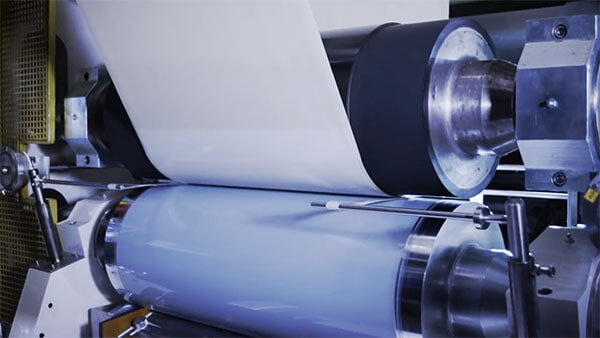
Step 3. Curing:
After the adhesive is applied to the liner, it goes through a curing process. This process involves exposure to heat or UV light to dry and harden the adhesive. The curing process helps to strengthen the bond of the adhesive and to set its final properties.
Step 4. Inspection and Quality Control:
Once the adhesive is cured, it undergoes inspection and quality control tests. This may involve checking the thickness and evenness of the adhesive, its adhesion strength, and its resistance to heat and chemicals. Any rolls of tape that don’t meet the required standards are discarded or reworked.
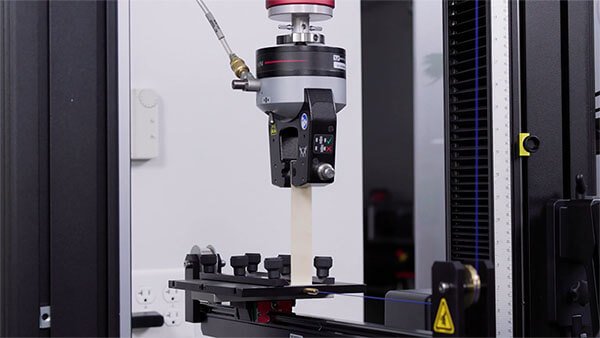
Step 5. Slitting and Packaging:
After passing quality control, the large rolls of adhesive transfer tape are cut into smaller rolls of the desired width in a process known as slitting. The slit rolls are then packaged and prepared for shipment to customers.
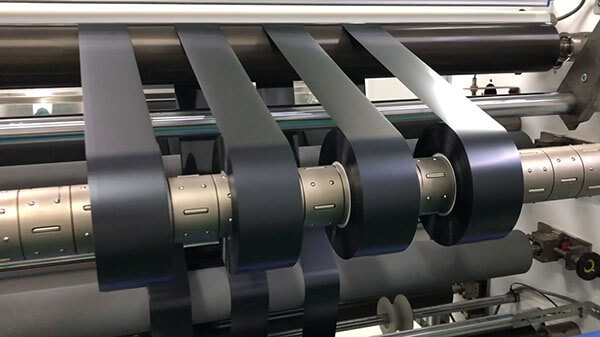
The Use of Adhesive Transfer Tape in Various Industries
Adhesive transfer tape is utilized across numerous industries, from automotive to electronics, healthcare, and more. In automotive applications, it is often used to attach trim, emblems, and other components due to its strength and durability. In the electronics industry, products like 3M 467MP are used to assemble devices or bond metal nameplates. Even in healthcare, adhesive transfer tape is employed to assemble medical devices, proving its adaptability across sectors.
Notably, in the field of RFID technology, Horae thin adhesive transfer tape has been remarkably useful. This thin adhesive tape is instrumental in the construction of RFID inlays and tags, where it provides secure and precise bonding between the chip and antenna, as well as the attachment of the tag to its substrate. This underscores the versatile application of adhesive transfer tapes across a wide range of industries and use-cases.
How to Choose the Right Adhesive Transfer Tape for Your Specific Needs
1. Material to be Bonded
The material you are bonding is the most crucial factor in choosing the right adhesive transfer tape. Different materials have different surface energies, and this affects how well an adhesive can bond to them. For example, materials like glass and metal typically have high surface energy and can be bonded easily with most adhesives, while materials like plastic or rubber usually have low surface energy and require adhesives specially formulated for such surfaces.
2. Application Environment
Consider the conditions under which the bond will need to function. This includes temperature, humidity, and exposure to chemicals or UV light. Some adhesives may work well in room temperature but lose their stickiness in high heat or cold conditions. Similarly, some adhesives might degrade if exposed to certain chemicals or UV light. Ensure the adhesive you select can withstand the environmental conditions of its application.
3. Load Bearing Capacity
Consider the weight or force that the bond will need to withstand. If the application requires high strength, you’ll need an adhesive that can handle the load without failing. The load could be static (like the weight of an object) or dynamic (like wind force on a sign).
4. Thickness of the Tape
The thickness of the adhesive transfer tape can impact its conformability (ability to adhere to irregular surfaces) and its ability to fill gaps between surfaces. Thicker tapes can fill larger gaps and adhere better to textured or rough surfaces. However, for applications requiring a thin, nearly invisible bond, a thin adhesive transfer tape would be more suitable.
5. Specific Application Requirements
Some applications might have specific requirements, such as electrical conductivity, optical clarity, or FDA approval for food contact. Make sure the adhesive transfer tape you select meets these requirements.
Adhesive Transfer Tape Vs. Other Adhesives: A Comparative Study
Adhesives are used in countless applications across a wide range of industries. Among them, adhesive transfer tape is a popular choice for its unique advantages, but it’s not the only option available. Let’s take a look at how adhesive transfer tape stacks up against other common types of adhesives.
1. Adhesive Transfer Tape Vs. Double-Sided Tape
While both adhesive transfer tape and double-sided tape have adhesive on both sides, there are key differences between the two. Adhesive transfer tape doesn’t have a backing material and is typically applied using a liner, making it more flexible and conformable to irregular surfaces. It can be extremely thin, which is beneficial for applications requiring a thin bond line. Double-sided tape, on the other hand, has a carrier or backing material sandwiched between two adhesive layers, making it more rigid but also often more resistant to tear or break.
2. Adhesive Transfer Tape Vs. Structural Adhesives
Structural adhesives, such as epoxies and acrylics, are often used in applications requiring a high-strength bond. While these adhesives can create a stronger bond than adhesive transfer tape, they often require a longer curing time and may need clamping or fixturing until the adhesive has cured. In contrast, adhesive transfer tape typically provides an immediate bond and doesn’t require curing or clamping.
3. Adhesive Transfer Tape Vs. Hot Melt Adhesives
Hot melt adhesives are applied in a molten state and create a bond as they cool and solidify. While they offer a quick bond and can bond a variety of materials, they may not perform as well in high-temperature applications. Adhesive transfer tapes, on the other hand, can be designed to withstand higher temperatures, and their performance isn’t affected by temperature changes during application.
4. Adhesive Transfer Tape Vs. Liquid Adhesives
Liquid adhesives are typically applied using a brush, roller, or sprayer, and can be messy to apply. They may require a drying or curing time before a bond is formed. Adhesive transfer tape, by contrast, is much cleaner to apply, provides an immediate bond, and doesn’t require drying or curing.
Innovative Applications of Adhesive Transfer Tape: Inspiring Examples
Adhesive transfer tapes aren’t just for industrial applications; they’re also used in creative and innovative ways. Transparent transfer tape, for example, is a favorite in the arts and crafts world due to its invisibility, allowing for seamless adhesion without disrupting the aesthetics of the design.

Related Products: Adhesive Transfer Tapes
FAQ:
Adhesive transfer tape is typically applied by removing the release liner and pressing the exposed adhesive onto the desired surface. Pressure should be applied evenly to ensure full contact and maximum adhesion. The surface should be clean and dry for best results.
Yes, but it's important to choose an adhesive transfer tape that is designed for outdoor use. These tapes are usually resistant to UV radiation, temperature fluctuations, and moisture.
This depends on the specific tape. Some adhesive transfer tapes are designed to withstand high temperatures and are suitable for applications like electronics assembly, where they may be subjected to soldering processes.
Removing adhesive transfer tape without leaving a residue can be challenging. Some tapes are designed to be removable, but many will leave a residue that may need to be cleaned off. Always check the product's technical data sheet or consult with the manufacturer if residue-free removal is a requirement for your application.
While it can be more challenging to get good adhesion to low surface energy materials (like polyethylene or polypropylene), there are adhesive transfer tapes specifically designed for these materials. Always ensure the tape you choose is suitable for your specific materials.
The lifespan of an adhesive transfer tape will depend on the specific product and the conditions under which it is used. Factors such as temperature, humidity, UV exposure, and the loads placed on the bond can all impact the longevity of the adhesive.
Category
